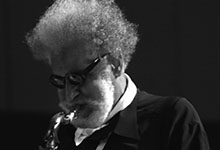"Exploring the Impact of Peter Scharf on Modern Urban Studies: A Comprehensive Analysis"
#### Introduction to Peter ScharfPeter Scharf is a prominent figure in the field of urban studies, known for his innovative approaches and contributions to……
#### Introduction to Peter Scharf
Peter Scharf is a prominent figure in the field of urban studies, known for his innovative approaches and contributions to understanding urban environments. His work has significantly influenced both academic research and practical applications in urban planning and development. This article delves into the various aspects of Peter Scharf's contributions, examining his theories, methodologies, and the impact of his work on contemporary urban studies.
#### Theoretical Contributions of Peter Scharf
Peter Scharf has developed several theoretical frameworks that have reshaped the way researchers and practitioners view urban spaces. One of his key contributions is the concept of "urban resilience," which emphasizes the ability of cities to adapt to challenges such as climate change, economic shifts, and social upheaval. Scharf argues that understanding the dynamics of urban resilience is crucial for developing sustainable cities that can thrive in the face of adversity.
Additionally, Scharf's work on social equity in urban planning highlights the importance of inclusive practices that ensure all community members have access to resources and opportunities. His theories advocate for participatory planning processes that engage local populations in decision-making, ultimately leading to more equitable urban environments.

#### Methodologies Employed by Peter Scharf
Peter Scharf employs a variety of methodologies in his research, ranging from quantitative analysis to qualitative case studies. His mixed-methods approach allows for a comprehensive understanding of urban phenomena, integrating statistical data with personal narratives and community insights. This holistic perspective is particularly valuable in urban studies, where complex social, economic, and environmental factors intersect.
One of the standout methodologies in Scharf's work is his use of Geographic Information Systems (GIS) to map urban trends and patterns. By visualizing data geographically, Scharf provides a clearer picture of urban dynamics, enabling researchers and policymakers to identify areas of need and potential intervention.
#### Impact on Urban Policy and Practice

The influence of Peter Scharf extends beyond academia into the realm of urban policy and practice. His research has informed numerous policy initiatives aimed at improving urban living conditions, promoting sustainability, and enhancing community engagement. Scharf's advocacy for evidence-based policy-making has led to the implementation of programs that prioritize data-driven decision-making in urban governance.
Moreover, Scharf's emphasis on community involvement has inspired a shift towards more participatory approaches in urban planning. By highlighting the voices of marginalized communities, his work has contributed to the development of policies that address social injustices and promote equitable access to urban resources.
#### Conclusion
In conclusion, Peter Scharf's contributions to urban studies are both profound and far-reaching. His theoretical insights, innovative methodologies, and commitment to social equity have made a lasting impact on the field. As cities continue to face unprecedented challenges, the relevance of Scharf's work becomes increasingly apparent. By integrating his principles into urban planning and policy, we can strive towards creating resilient, inclusive, and sustainable urban environments for future generations.

This comprehensive analysis of Peter Scharf's work underscores the importance of his contributions to modern urban studies and highlights the need for continued research and application of his theories in addressing the complexities of urban life.